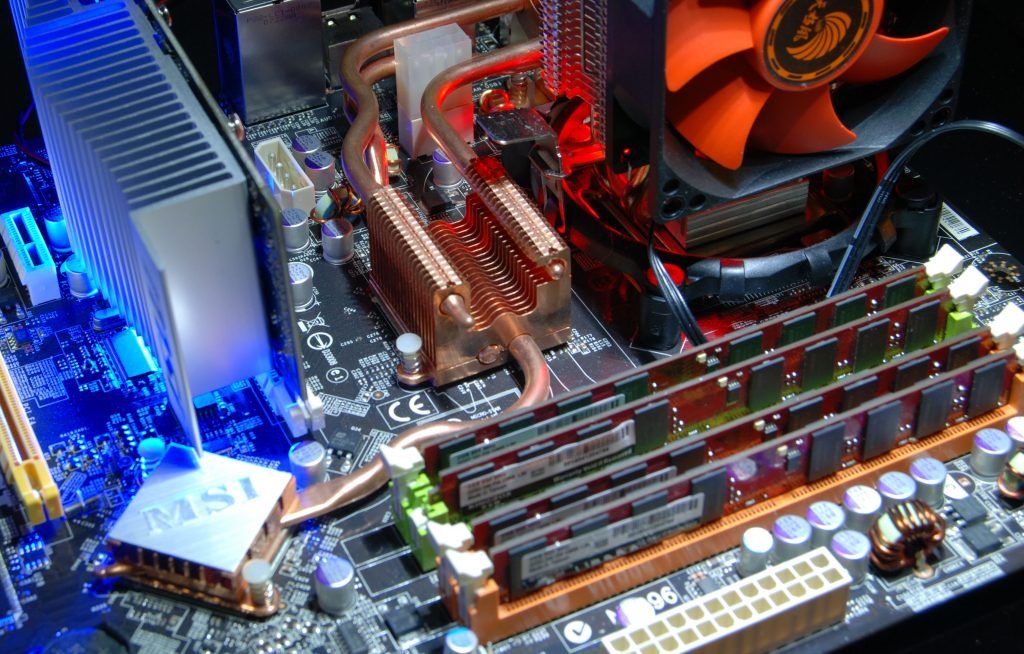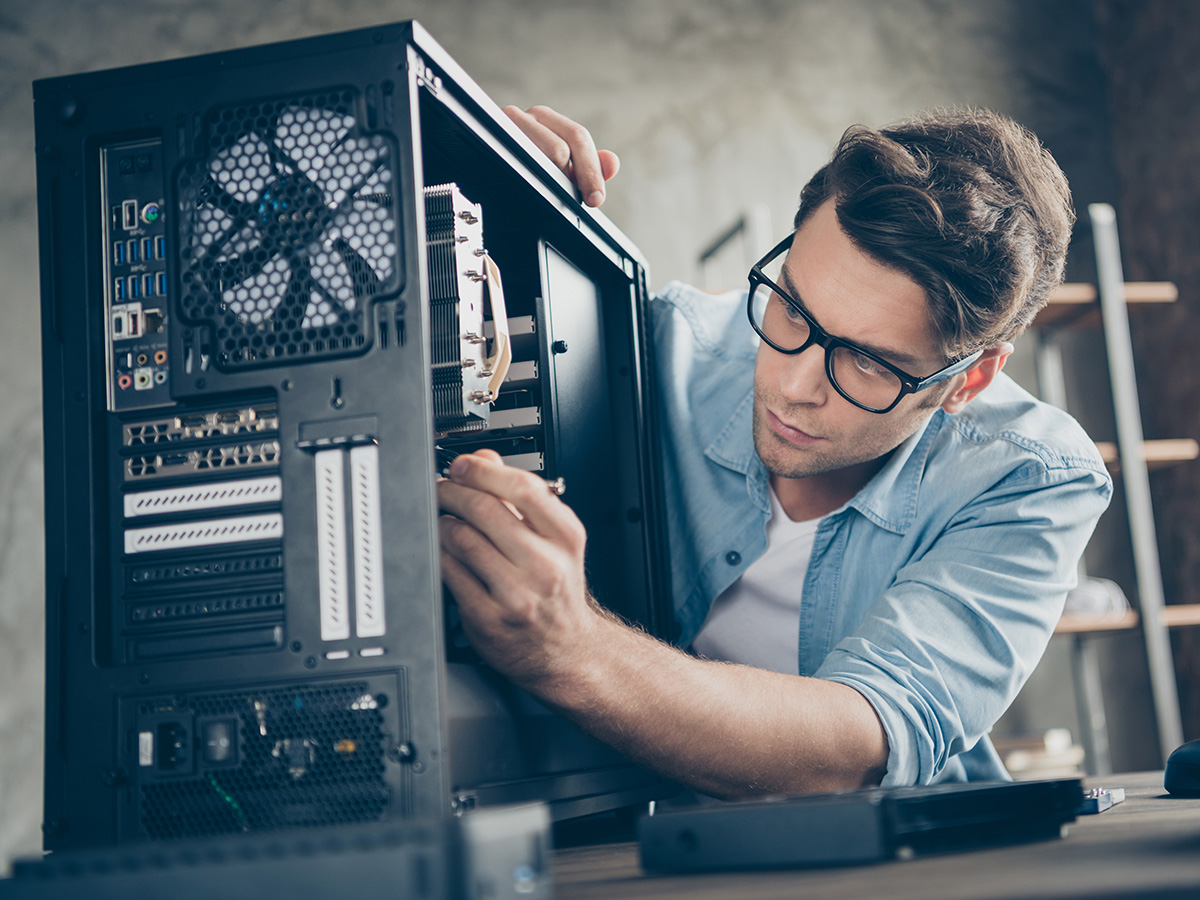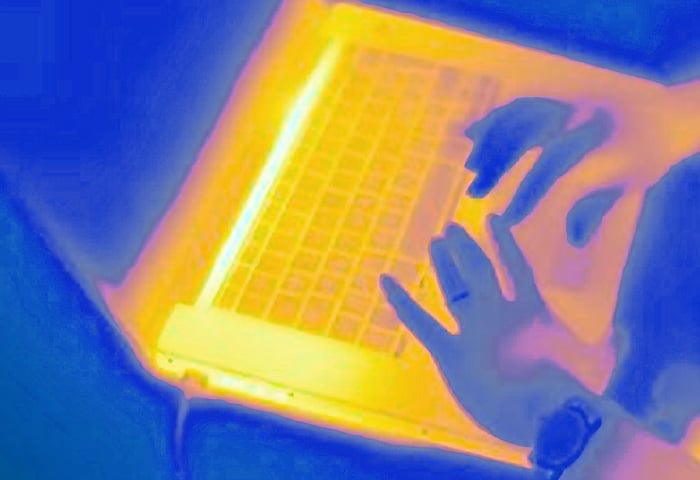Ensure proper ventilation and clean dust buildup. Apply new thermal paste if necessary to fix CPU overheating.
CPU overheating can significantly impact your computer’s performance and lifespan. Overheating occurs due to poor ventilation, dust accumulation, or degraded thermal paste. Addressing these issues is crucial for maintaining optimal CPU temperatures. Check your computer’s airflow and ensure fans are functioning correctly.
Regularly clean dust from internal components using compressed air. Replace old thermal paste on the CPU with a high-quality alternative. These steps can help prevent overheating, ensuring your system runs smoothly and efficiently. Proper maintenance extends your hardware’s life and enhances overall performance, keeping your computer in top condition.
Recognizing Cpu Overheating
Your computer’s CPU is the brain of your system. If it gets too hot, it can cause serious problems. Recognizing the signs of CPU overheating is crucial for maintaining your computer’s health. In this section, we’ll explore how to identify if your CPU is running too hot.
Signs Your Cpu Might Be Running Too Hot
There are several signs that your CPU might be overheating:
- Frequent crashes: Your computer might crash often without any obvious reason.
- Slow performance: Tasks that usually take seconds might take minutes.
- High fan noise: Your computer’s fans might run louder than usual.
- Unexpected shutdowns: Your system might shut down to prevent damage.
- Blue screen of death (BSOD): You might see the dreaded blue screen more often.
Thermal Thresholds For Common Cpus
Different CPUs have different thermal thresholds. Here’s a quick guide:
| CPU Model | Safe Temperature Range (°C) |
|---|---|
| Intel Core i7 | 50°C – 70°C |
| AMD Ryzen 5 | 45°C – 65°C |
| Intel Core i9 | 55°C – 75°C |
| AMD Ryzen 7 | 50°C – 70°C |
Always monitor your CPU temperature. Use tools like Core Temp or HWMonitor for real-time data. Keeping your CPU within these ranges can prevent overheating.

Credit: www.drivereasy.com
Immediate Actions To Reduce Heat
CPU overheating can damage your computer. Knowing how to reduce heat immediately is crucial. Here are some quick actions to help cool down your CPU.
Shutting Down To Prevent Damage
If your CPU is overheating, shut down your computer immediately. This prevents further damage. Use the power button or the shutdown option. Your CPU needs a break to cool down. Wait at least 15 minutes before turning it back on.
Improving Ventilation Temporarily
Improve ventilation to cool your CPU quickly. Move your computer to a cooler area. Ensure there is space around it for air to flow. Use a fan to blow air towards your computer. This helps cool it faster.
Keep the computer on a hard, flat surface. This allows better air circulation. Avoid placing it on soft surfaces like beds or sofas. These can block vents and trap heat.
- Use a cooling pad for laptops.
- Open windows for better room ventilation.
- Remove dust from vents and fans.
These actions provide immediate relief to your overheating CPU. They help prevent further damage while you plan for a permanent solution.
Enhancing Airflow Inside Your Case
Optimizing airflow inside your computer case is vital to prevent CPU overheating. Proper airflow keeps your components cool and your system running smoothly. Let’s explore how to enhance airflow inside your case.
Optimizing Fan Placement
Fan placement plays a crucial role in maintaining effective airflow. Position fans to create a clear path for air to move through the case. This typically involves having intake fans at the front and exhaust fans at the rear.
Use the table below to understand the best fan placements:
| Fan Position | Direction |
|---|---|
| Front Fans | Intake (bring cool air in) |
| Rear Fans | Exhaust (push hot air out) |
| Top Fans | Exhaust (release rising hot air) |
| Bottom Fans | Intake (bring cool air in) |
Ensure a balance between intake and exhaust fans to maintain optimal airflow. This balance helps in efficiently cooling all components.
Clearing Obstructions
Obstructions inside your case can hinder airflow. Clear all cables and components that block air movement. Use cable ties to tidy up loose wires and ensure they do not obstruct the fan path.
Follow these steps to clear obstructions:
- Organize cables using cable management features in your case.
- Remove dust regularly using compressed air. Dust can clog fans and vents.
- Ensure no large components block airflow paths. Position them to allow free air movement.
Keeping your case clean and organized can significantly improve airflow, thus reducing CPU overheating.
Cleaning Components
Keeping your CPU cool is vital for performance. Overheating can cause crashes and damage. Cleaning your computer components helps prevent this. Here, we discuss effective ways to clean your computer to avoid overheating.
Dust Removal Techniques
Dust buildup is a common cause of overheating. Regular dust removal helps maintain airflow and cooling efficiency. Below are some effective techniques:
- Compressed Air: Use a can of compressed air. Blow dust off the fans and heatsinks.
- Soft Brush: A soft brush can reach tricky areas. Gently brush off the dust.
- Vacuum Cleaner: Use a vacuum with a nozzle attachment. Be careful not to touch the components.
Maintaining A Clean Environment
A clean environment can reduce dust accumulation. Follow these tips to keep your workspace dust-free:
- Regular Cleaning: Dust your desk and surrounding area weekly.
- Air Purifiers: Use an air purifier to minimize dust in the room.
- Closed Case: Keep your computer case closed to prevent dust entry.
- Elevate Your PC: Place your computer on a stand. This reduces dust intake from the floor.
Following these steps can help keep your CPU cool. A clean computer runs more efficiently. Regular maintenance is key to preventing overheating.
Updating Cooling Systems
CPU overheating can be a serious issue. Ensuring your cooling system is up to date is crucial. Updating your cooling systems helps in maintaining optimal performance. This section will guide you through two essential updates.
Choosing The Right Thermal Paste
Thermal paste is crucial for efficient heat transfer. It fills microscopic gaps between the CPU and the cooler. Here are steps to choose the right thermal paste:
- Check Thermal Conductivity: Look for thermal paste with high thermal conductivity.
- Consider Longevity: Some thermal pastes last longer than others. Choose one with a longer lifespan.
- Ease of Application: Ensure the paste is easy to apply and spread evenly.
| Brand | Thermal Conductivity (W/mK) | Longevity |
|---|---|---|
| Arctic Silver 5 | 8.9 | 8 years |
| Thermal Grizzly Kryonaut | 12.5 | 6 years |
| Noctua NT-H1 | 8.9 | 5 years |
Upgrading To An Aftermarket Cooler
Stock coolers may not always be sufficient. Upgrading to an aftermarket cooler can significantly reduce temperatures. Consider the following factors:
- Compatibility: Ensure the cooler is compatible with your CPU socket.
- Cooling Performance: Look for coolers with high cooling performance, measured in CFM (Cubic Feet per Minute).
- Noise Levels: Opt for coolers that offer a balance between cooling efficiency and noise levels.
Popular aftermarket coolers include:
- Cooler Master Hyper 212 EVO: Known for its excellent cooling performance and affordability.
- Noctua NH-D15: Offers top-tier cooling performance with minimal noise.
- be quiet! Dark Rock Pro 4: Provides efficient cooling with a focus on quiet operation.
Adjusting Your System Settings
Adjusting your system settings can significantly reduce CPU overheating. Simple changes in the BIOS or software can make a big difference. Below, we cover two essential methods: BIOS tweaks for better airflow and software solutions for temperature control.
Bios Tweaks For Better Airflow
The BIOS is the basic input/output system of your computer. Tweaking it can improve CPU cooling. Start by entering the BIOS setup during system boot. Look for the “Fan Control” settings. Adjusting fan speeds can help.
- Set the fan speed to maximum.
- Enable automatic fan control if available.
- Ensure your fans are functioning properly.
Next, check your system’s thermal settings. Some BIOS versions have options to reduce CPU voltage. Lower voltage can decrease heat production. Also, make sure the airflow settings are optimal.
Software Solutions For Temperature Control
Software solutions can also play a big role in managing CPU temperature. Several programs can monitor and control system temperatures. Below are some popular options:
| Software | Features |
|---|---|
| HWMonitor | Monitors system temperatures and fan speeds. |
| SpeedFan | Adjusts fan speeds to control temperatures. |
| Core Temp | Provides real-time temperature readings. |
Install and run one of these programs. Monitor your CPU temperature closely. If temperatures are high, you can manually adjust the fan speeds. Some software also allows for automatic adjustments based on temperature readings. Keep your software updated for the best performance.
Using these methods, you can significantly reduce CPU overheating. Simple tweaks can extend your computer’s lifespan and ensure smooth performance.
Monitoring Temperature Post-fix
After fixing CPU overheating, monitoring its temperature becomes crucial. Keeping an eye on temperature ensures the issue is resolved. It also helps prevent future overheating.
Software Tools For Real-time Monitoring
Various software tools help in real-time temperature monitoring. These tools provide accurate readings and alerts.
- HWMonitor: This tool displays the temperature of your CPU in real-time. It also shows voltages and fan speeds.
- Core Temp: Core Temp focuses on the CPU. It shows the temperature of each core separately.
- Real Temp: Designed for Intel processors, it shows real-time temperatures and load levels.
Using these tools, you can keep track of your CPU’s health. They are easy to use and very effective.
Understanding Safe Operating Ranges
Knowing safe temperature ranges is crucial. This helps you understand if your CPU is overheating.
| CPU Model | Safe Temperature Range (°C) |
|---|---|
| Intel Core i5 | 30-75 |
| Intel Core i7 | 30-80 |
| AMD Ryzen 5 | 30-85 |
| AMD Ryzen 7 | 30-90 |
Keep your CPU within these ranges to prevent damage. If temperatures go beyond, take action immediately. Use cooling solutions or check for dust buildup.
By monitoring your CPU temperature post-fix, you ensure a longer lifespan. It also maintains optimal performance.

Credit: www.avira.com
When To Seek Professional Help
Sometimes, DIY solutions aren’t enough to fix CPU overheating. In such cases, it’s best to seek professional help. Professionals have the tools and expertise to solve complex issues. But how do you know when it’s time to call them?
Identifying Persistent Overheating Issues
If your CPU continues to overheat after you’ve tried basic fixes, this is a red flag. Persistent overheating can damage your hardware. Here are some signs that indicate you need professional help:
- Frequent System Crashes: If your computer crashes often, overheating could be the cause.
- Unusual Noises: Strange sounds from the CPU indicate internal problems.
- Constant Rebooting: If your system reboots on its own, this is a clear sign of overheating.
- High Fan Speed: If the fan is always running at high speed, it’s trying to cool down an overheating CPU.
Finding Qualified Technicians
Once you’ve identified persistent issues, the next step is to find a qualified technician. Not all technicians are the same. Here are some tips to find the right one:
- Check Certifications: Look for certifications like CompTIA A+ or similar.
- Read Reviews: Online reviews can give you insight into the technician’s reliability.
- Ask for Referrals: Word-of-mouth recommendations can be valuable.
- Compare Prices: Get quotes from multiple technicians to compare costs.
Finding the right professional ensures your CPU gets the care it needs. This can extend the life of your computer and improve performance.
| Issue | Professional Needed |
|---|---|
| Frequent Crashes | Yes |
| Unusual Noises | Yes |
| Constant Rebooting | Yes |
| High Fan Speed | Yes |
Preventive Measures To Avoid Future Overheating
Cpu overheating can damage your computer. Taking preventive measures is essential for long-term performance. Let’s explore some practical steps to keep your CPU cool.
Regular Maintenance Schedule
Creating a regular maintenance schedule is crucial. It helps in avoiding future overheating issues. Here are some steps to include:
- Clean your computer every three months. Use compressed air to remove dust from the CPU and other components.
- Check thermal paste annually. Replace it if it looks dry or cracked.
- Update your BIOS and drivers. New versions often include better thermal management.
- Monitor CPU temperature with software tools. Act immediately if temperatures exceed safe limits.
Investing In Quality Components
Investing in high-quality components can prevent overheating. Here are some recommendations:
| Component | Recommendation |
|---|---|
| CPU Cooler | Choose a reputable brand with high cooling efficiency. |
| Thermal Paste | Use high-quality thermal paste for better heat conduction. |
| Case Fans | Install additional fans to improve airflow inside the case. |
| Power Supply Unit (PSU) | Select a PSU with sufficient power to handle all components. |
Using quality components ensures efficient cooling. This extends the lifespan of your CPU.

Credit: www.avg.com
Frequently Asked Questions
How Do I Stop My Cpu From Overheating?
Clean dust from vents and fans. Use thermal paste on the CPU. Ensure proper airflow in the case. Upgrade the CPU cooler. Avoid overclocking.
Why Is My Cpu Heat So High?
High CPU heat can result from poor ventilation, dust buildup, or excessive overclocking. Ensure proper airflow and clean the fans.
How Do You Cool Down A Cpu?
To cool down a CPU, use a high-quality thermal paste and install an efficient cooling fan. Ensure good airflow in the case. Consider using liquid cooling systems for better performance. Regularly clean dust from vents and components.
How Do I Fix My Cpu Cooling?
Clean dust from fans and heat sinks. Apply new thermal paste to the CPU. Ensure proper airflow by organizing cables. Replace faulty cooling components. Upgrade to a better cooling system if necessary.
Conclusion
Ensuring your CPU stays cool is crucial for optimal performance. Regular cleaning, proper ventilation, and quality thermal paste can help. Monitor temperatures using reliable software. Addressing these issues promptly will prolong your computer’s lifespan and enhance efficiency. Keeping your system cool ensures smooth and uninterrupted operation.
Follow these tips to prevent overheating.

Leave a Reply
You must be logged in to post a comment.